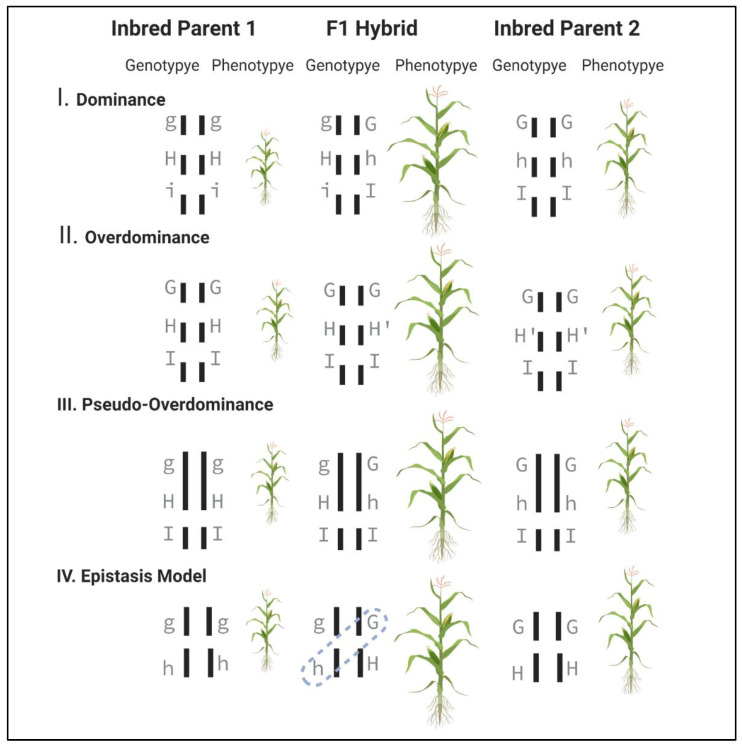Figure 2.
Genetic models for heterosis. Diagrams represent that the hypothetical phenotype or trait is influenced by multiple linked or unlinked loci (e.g., ‘g’, ‘h’, ‘i’). (I) Dominance Model: Inbred parents 1 and 2 exhibit marginally deleterious alleles in homozygous form (g and i in parent 1; h in parent 2). In F1 hybrid, complementation of superior alleles (G, H, I) occur at each locus resulting in a superior F1 phenotype. (II) Overdominance Model: Homozygous alleles at locus ‘h’ are different for both the inbred parents (HH and H’H’). In F1 hybrid, the interaction H and H’ produces a superior phenotype in comparison to both homozygous parents. (III) Pseudo-Overdominance Model: The superior performance of F1 hybrid is due to a small chromosomal region harboring two or more loci (e.g., g and h) linked in repulsion, in which the complementation of G and H is mimicking overdominance. (IV) Epistasis Model: The superior performance of F1 hybrid is due to the interaction between two different loci.

